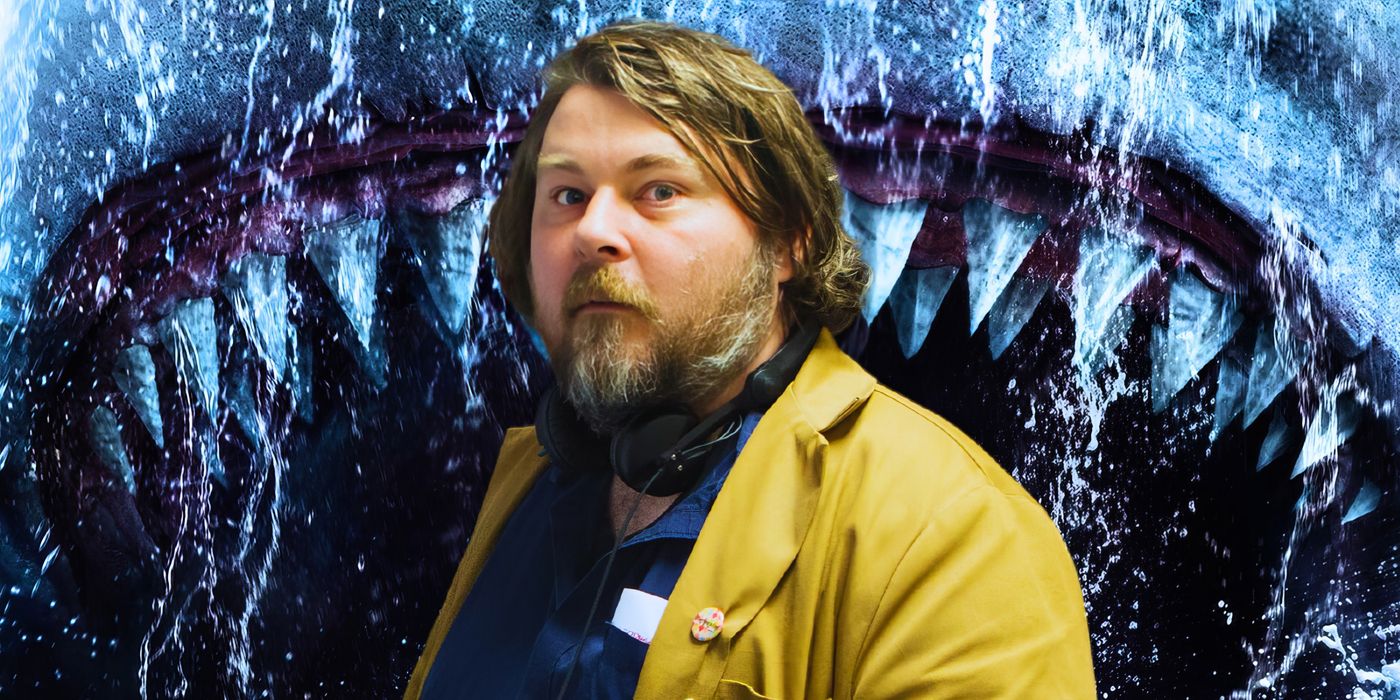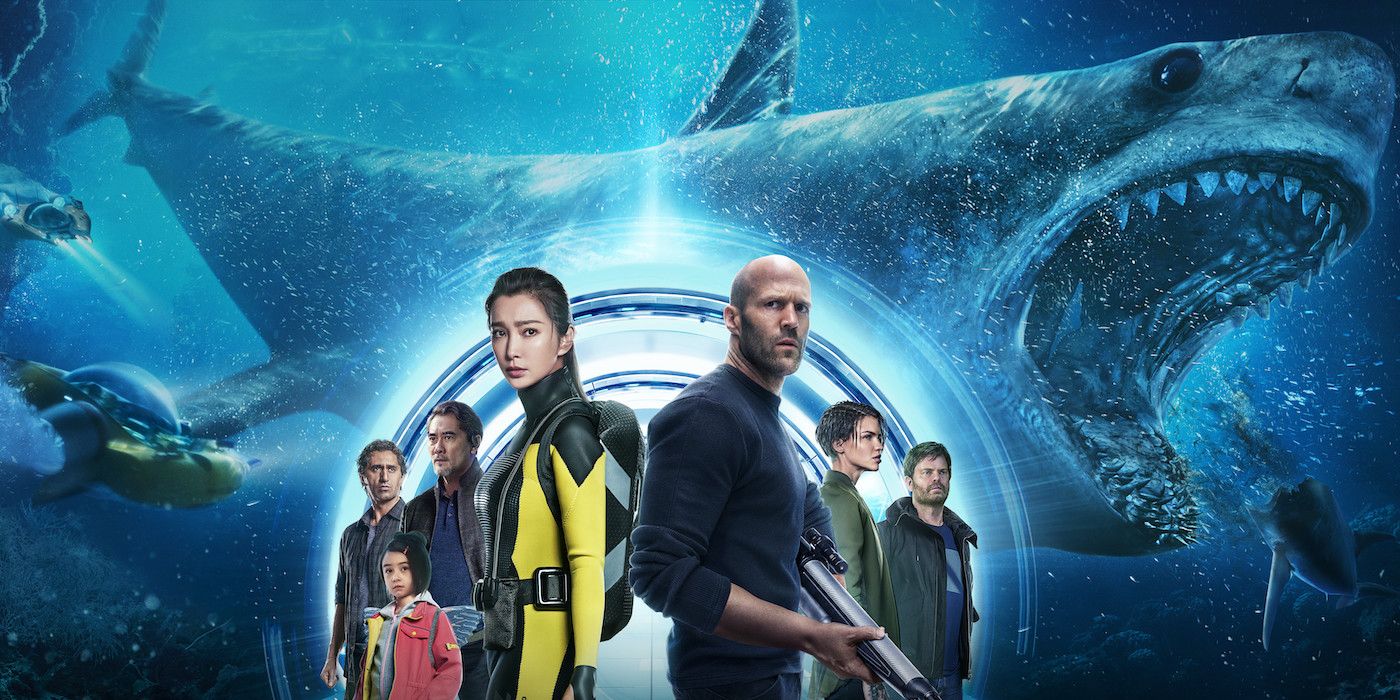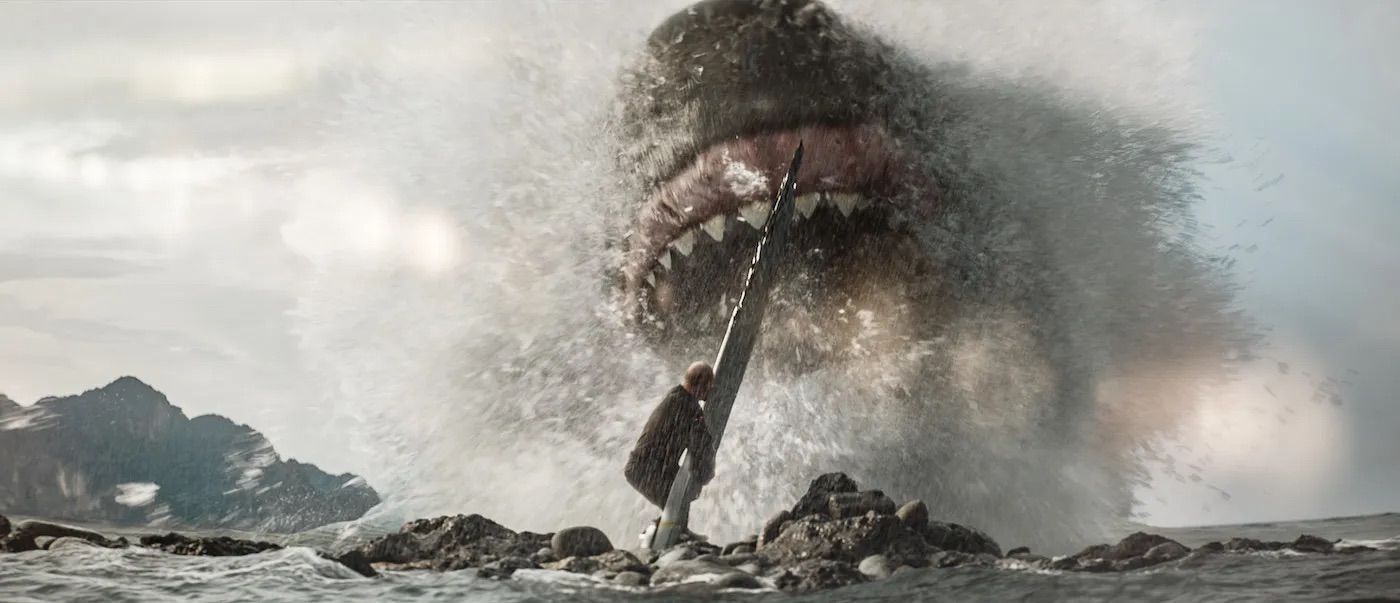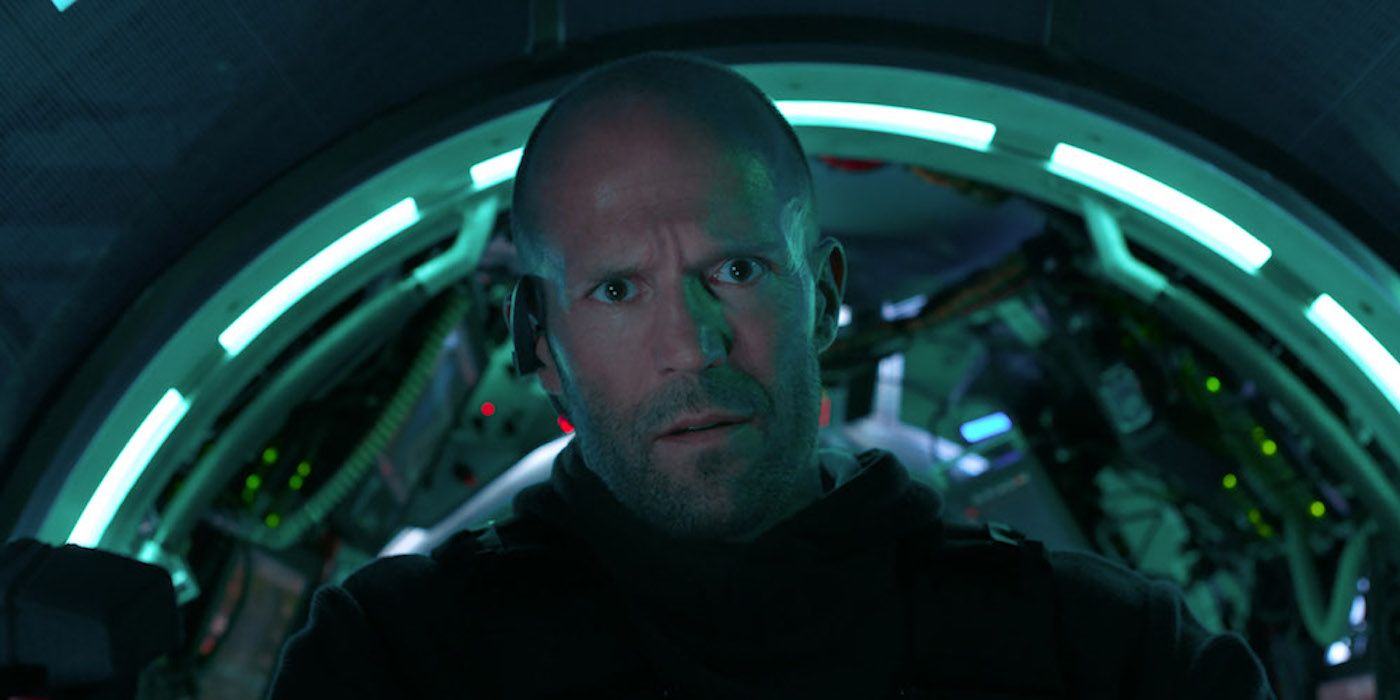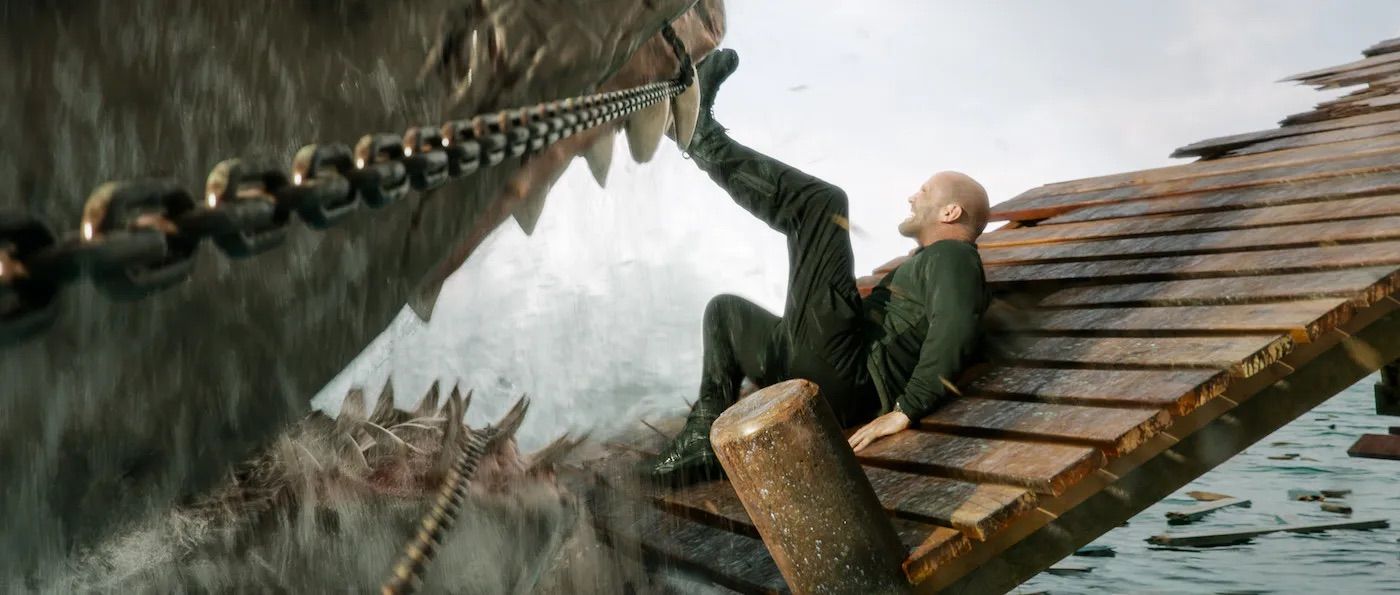The Big Picture
- "Meg 2: The Trench" is a highly anticipated summer blockbuster and sequel to "The Meg" (2018) that explores more monstrous creatures lurking in the deep sea.
- Director Ben Wheatley discusses finding a balance between horror and humor in the film, as well as the challenges and excitement of helming a big-budget studio blockbuster.
- The movie is a Chinese co-production and aims to appeal to both Chinese and international audiences by incorporating cultural details while maintaining an international crew and story.
The biggest event to hit theaters this summer since Barbenheimer is the highly anticipated follow-up to the Jason Statham-led thriller, The Meg (2018). As Meg 2: The Trench splashes its way to the box office, audiences are beyond ready to see what other fantastical, monstrous creatures the deep is home to. Return to Mana One with Statham, global action hero Wu Jing (The Wandering Earth), and their research team to face off not only with whatever lurks beneath the surface but with human foes looking to exploit the Meg’s environment as well.
To kick off Meg 2’s theatrical premiere, Collider’s Steve Weintraub spoke with the sequel’s director, Ben Wheatley. Wheatley’s filmography ranges from the more “gentle” adventure comedy, Sightseers, to the deadly Kill List, but Meg 2 is, without a doubt, the most mammoth project the filmmaker has taken on to date as far as studios and budgets are concerned. While discussing this opportunity, Wheatley dives into the details behind what we can only hope will go on to become a beloved summertime franchise, explaining how he finds a balance between horror and humor and why it’s important to give the audience breaks. He also shares the revelations of helming a big studio blockbuster, how they manage to give us an insider look at the Megalodon, the merits of working with an international crew, and tons more. You can check out the full interview below.
COLLIDER: You have a great resume. If someone hasn't seen anything you've done, what's the first thing you want them watching and why?
BEN WHEATLEY: Oh, bloody hell, I don't know. I mean, I think it's an interesting thing if you start to analyze the people who watch the films I make. Usually, there's the hardcore people who have watched all of them, and then there's new fans around each movie. So it depends what kind of a person they are for what the starting point is. I mean, Sightseers is probably a more gentle in than anything, but if you want to test them, you just send them straight to Kill List.
But I mean, I think probably this is going to be seen by more people than in my entire filmography combined, times 100, and that’s what I wanted, to do something that was big and poppy and fun.
You're 100% right. So many people are gonna see this versus Kill List or some of the others. You've never made a movie with this kind of budget and these kinds of VFX shots, so was this an experience that you loved, or were you like, “This is a one-and-done situation?”
WHEATLEY: No, I enjoyed it a lot. I think there's kind of levels of filmmaking that you get exposed to. The first time that I made a movie where we could paint locations, or you get a design department that will design things for you, you go, “Oh my god! You can design the books on the bookshelf. That’s amazing!” Or you're making handheld stuff, which is all documentary, and it's in environments. With Meg, it’s like there's nothing that you can't change, nothing you can't build, and you're only restricted by your own imagination in that respect, visually, and that's incredible. That's something I've been working towards my whole career, that you would have that and there's no excuses. And so, yeah, I think in terms of dealing with the effects where I feel like now after going through it, I've got this massive build-up of a skill set, which I need to use again because it's nonapplicable to anything else.
[Laughs] No, it's only films that have a budget to spend. One of the shots I love is when you are inside the Megalodon, you have the swimmers coming in the mouth, and the jaw is closing. I mean, that's the kind of shot that I love. Talk about pulling off that shot and how you did it.
WHEATLEY: What it was with that is I'd drawn a lot of gags for the sharks. So we were thinking about, “What could the sharks do?” And this interior mouth shot was something like, “Oh god, we gotta do that. That's great!” And that fear of people being eaten alive was the thing, and the reality of what happens. [...] The Meg is massive, and when people go in its mouth, you don't know what happens to them, but that's the question in your mind, is like, “What happens next once you're inside there?” Because if you don't get bitten by the thing, which is unlikely, you're just swimming around inside. And I think that's what makes it fun.
But then, yeah, to shoot it, I can't remember now – we had, like, a kind of bumper bar or something like that, and then people in the swimming pool, and we were pulling over and then pulling them down from underneath and all this. [Laughs] Yeah, it was good fun. And then, obviously, that’s some great CG on it as well to finish it off.
One thing about Meg 2 is that it's a Chinese co-production, so you have to appeal or make sure that the Chinese producers are getting what they want and all the other producers are getting what they want, and you're also trying to facilitate your own vision of this movie. Can you talk about balancing that? Because there are a lot of different people in the swimming pool, all having a voice.
WHEATLEY: I didn't ever see it as groups of people wanting their stuff. There's no hierarchy in that, in a way. It's more like you're trying to make a film that will play internationally, and China is a massive part of that international audience. We were making a film that wasn't like, “Oh, look at the differences between East and West, and the funny confusions between people.” It's not that. It's just like an international crew of people, of characters, working together towards a goal of basically surviving or whatever. And we had Chinese writers who were kind of helping with making sure that Wu Jing's character would fit within culturally, so there was no clumsiness from our side, and it would all make sense to the Chinese audience. We just paid really clear attention to those little bits of detail that would help the Chinese audience. But equally, we didn't want that to overbear the western side of it, so it was a very subtle balance between the two as much as we could.
The China box office for this movie matters a lot. So you need to make sure that it works for, as you said, both audiences. Was there anything that you wanted to do that people were like, “Oh no, that's pushing it too far?”
WHEATLEY: Yeah, I mean, I went mad and designed all sorts of stuff, you know? And there was a come-to-Jesus moment when we were, like, hundreds of millions of dollars over, and I went, “Right. Okay. Well, let me calm it down a bit here and there.” [Laughs] But even then, I guess I was kind of over-compensating because I could do all this stuff. When I look at the movie now, I think it was the right decision. It wouldn't have made it better. It just made it longer and more exhausting, because once you get up to a fever pitch of action and dynamic movement, there's nowhere for you to go. Eventually, it's a zero-sum game where you're gonna run out of steam as an audience member.
I had it once where I went to see a recording of a comedy show, and they recorded two at once. The first one, everyone laughed like mad, and then they recorded the second one and they didn't laugh as much, and it wasn't because it was less funny. They were just exhausted, you know? I think there's only so much you can take before you need to stop, and that's why I like the film, it's a good running time as well. It doesn't outstay its welcome.
One of the things I find fascinating about this movie is you worked with Haris [Zambarloukos], who shoots a lot of Kenneth Branagh movies. So, you have the cinematographer of Belfast shooting Meg 2. Talk a little bit about why you wanted to work with Haris to shoot the movie.
WHEATLEY: Yeah, but he's also the cinematographer of Thor, so there’s that.
True.
WHEATLEY: With Haris, there was some matchmaking going on by the grader that we both work with. For ages, I've heard about Haris. There's conversations about Haris all the time with Rob Pizzey, who’s the grader. I’d be grading a highrise and he goes, “Oh, Haris was in earlier, blah, blah, blah. Haris, Haris, Haris.” So I’d had, like, 10 years of Haris, being told about Haris and what a great DOP he was, and how nice he was. So, it was kind of inevitable we'd end up working together, and it was great. He's very creative and very flexible.
Also, he's big into surfing and all the aquatic stuff. The most advanced kind of underwater cameras, as far as we understood, are basically at the studios for Blue Planet, for the BBC show, when they shoot. So that's just up the road, you know, so we went up the road, and Haris got all these massive domed cameras and all that. So you see in the film where you see above and below the line of shooting, but it doesn't have that thing where their bodies distort massively underneath the water, it's all the same thing, and that is something from Blue Planet. They developed the camera that would do that. That was one of the kind of innovations we had on the show.
One of the things I really enjoyed about this movie is the third act because you essentially do a Bad Boys II, where I think it's like going one place, and then once you get to Fun Island, it's a whole other thing. Can you sort of talk about—and I'm really reaching on this—but did you think of Bad Boys II at all? Because that is an ending where it just goes to like a whole other thing. The first two acts of this are like a thriller trying to figure out what's going on, and then it just goes Meg crazy.
WHEATLEY: I don't think Bad Boys II came into the conversation, to be fair. I'd love to say it. It was more a kind of thing about exploration, and that the film would feel like a journey of environment, so you don't repeat the same environment, it doesn’t get samey like that. We wanted it to end on a real holiday feel, like a kind of blue skies, beautiful water, beautiful beaches, and all that kind of stuff. There is an element in movies when you've got an audience in the auditorium that you can take them places. So even if there’s lots of carnage and action going on, you take them on holiday for a little bit, just for like 20 minutes, and it kind of soothes their soul as they watch it. But I wanted that beautiful kind of Jules Verne feeling of, you're at the bottom of the sea, you're in submarines, you're journeying on the sea, and then you're at an island. You feel like the film's not being mean with you, you know? It's giving you stuff – it's gifts to look at.
Completely. You definitely pulled from Godzilla, Jurassic Park, Jaws; there are a lot of things that have been melted together for this. Honestly, how much fun did you have getting to play with these kinds of things?
WHEATLEY: Yeah, I mean, it was a fully giddy time. I couldn't believe it. [Laughs] Every day I had to pinch myself. You know, just the construction, they built these massive sets, like that underwater base thing that's in the leg of the of Mana One. That was like a James Bond set, it was huge. Then they built this huge exterior for Mana One in a massive pond as well. None of that was, obviously, on a real oil rig or at sea or stuff, but, yeah, it's huge. It's almost like they built a shopping mall or something. I went past it in a buggy, and I'm like, “What is that?” It's just this thing rising up out of the ground.
One of the things that was really amazing was working with Dominic Tuohy, who's the visual effects guy. He'd won the Oscar for 1917, and he was like, “Well, on the helicopter stuff, we could just build a gimble, but that's boring. Why don't we take a helicopter and put an arm on the top of it, and then extend that arm that way and then that way, and then up into the ceiling of a studio, and then spin it all on the axis like that around the room?” I'm like, “Can you do that? [Laughs] Okay, I'd love to see that.” So yeah, they built that thing. The whole camera crew was in the helicopter as he was doing all that, and it was absolutely bonkers.
One of the things about the Meg movies is that you wanna have fun and laugh, but you also want to keep the stakes high. Can you talk about that balance of when you're willing to let the audience laugh a little bit? Like, for example, Jason Statham swimming at 20-something-thousand feet outside, where you know this is preposterous, but you're along for the ride, but you're also trying to keep the stakes.
WHEATLEY: That one was tricky because it had been explained to me by the writers that it was maybe possible, partially possible, and the idea of pressure, there is no pressure that will squash you. As it says in the film, the fish don't get squashed, and they're like jellyfish and shit, otherwise, they’d all be flat, wouldn't they? But it was trying to work out a way of explaining because we had test screenings where people went, “No, no, no, no, no, you can't. That's stupid.” And we had to work out a way of explaining it to them because everyone's been brought up on years of submarine movies where they implode flat. But that's not because of the pressure of the thing, it's because of the oxygen in the submarine...Anyway, it gets complicated.
But yeah, what happens is that when you test it, the film is always going for an extreme, and if it goes over the extreme then it breaks the next sequence. It's a process of just gently kind of tuning all those bits of extremity so that they don't upset the next bit of the film. We mostly got it right, but occasionally it was like, “Oh, that's not working.” Then we would edit it and find it. But it was great. I really enjoyed that process of [getting], like, 200 people in a room and then [putting] an infrared camera on them, and you could see what jokes were working and what action was working. It’s a massive tool.
Meg 2: The Trench is now in theaters.

